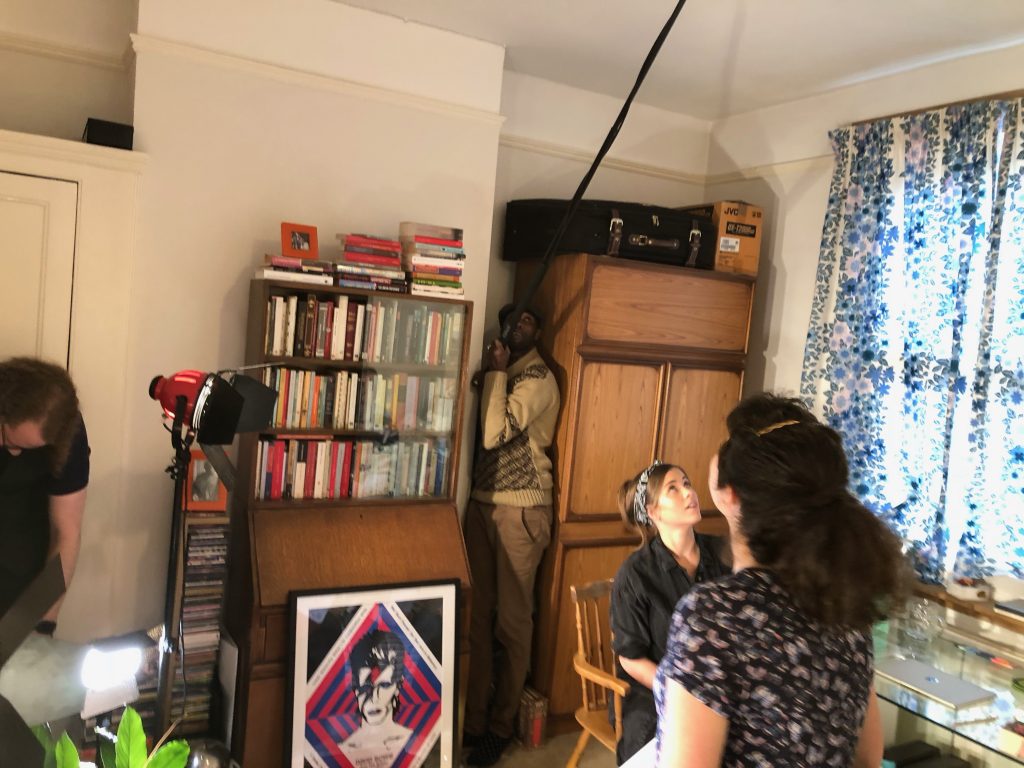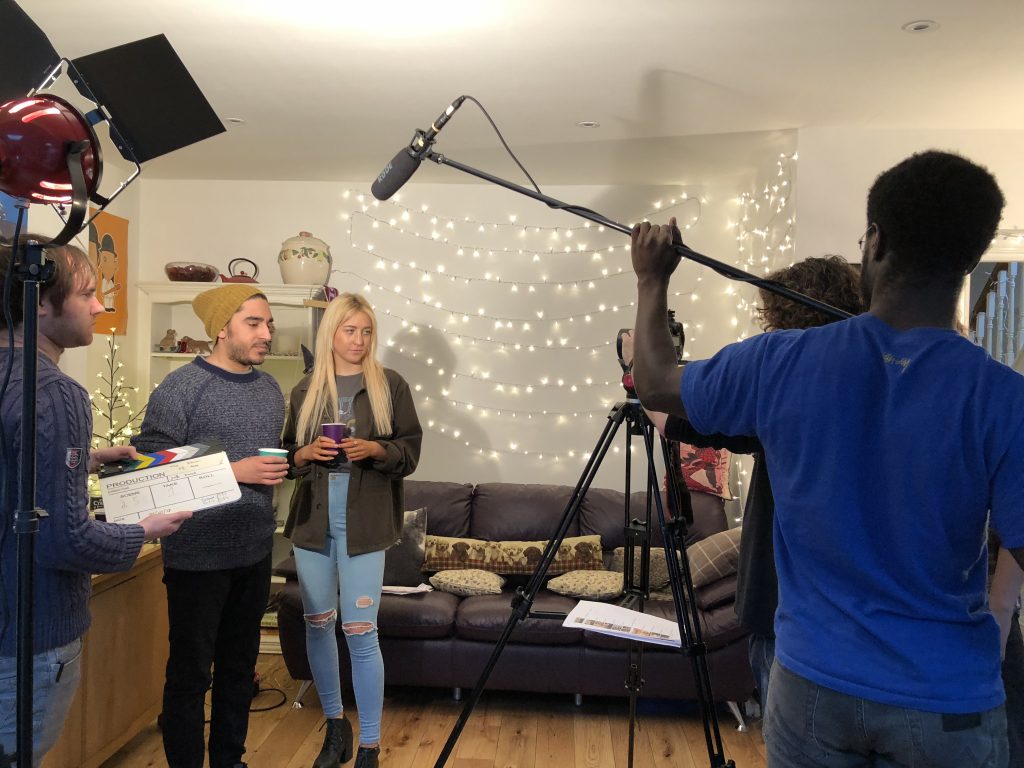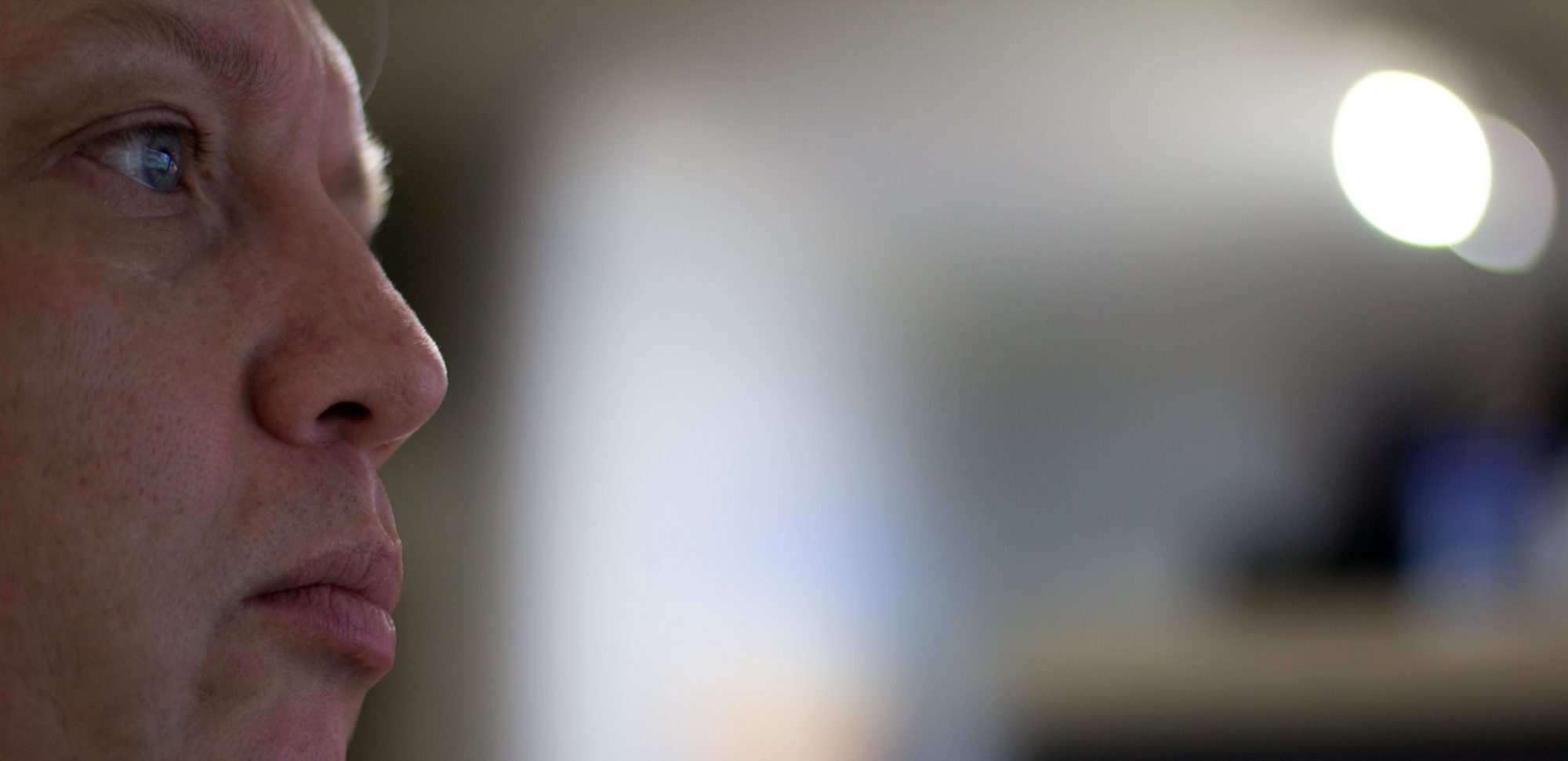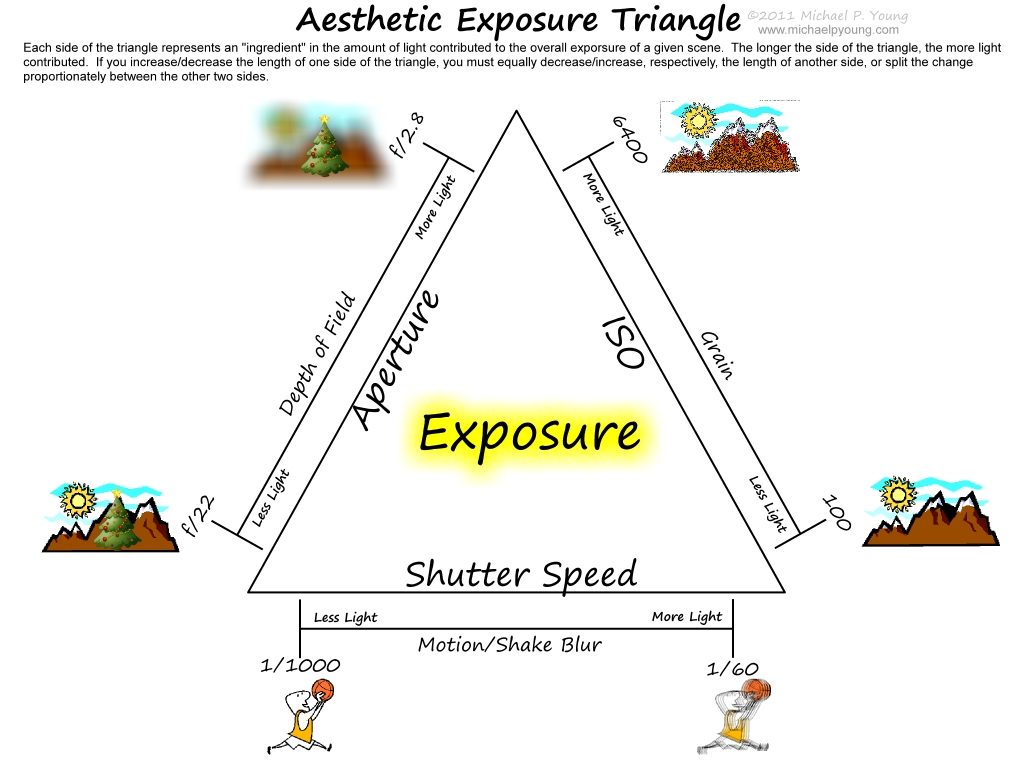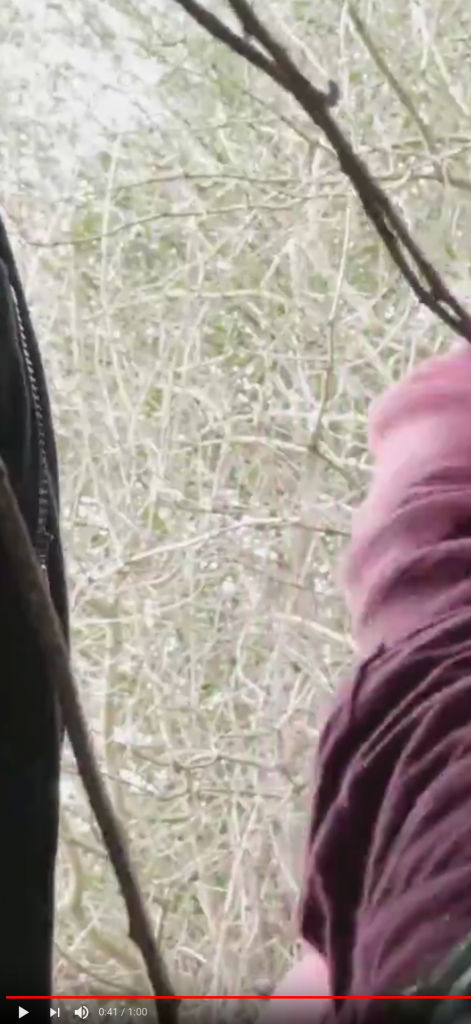Reflecting on Dating Dilemmas
My original script was written as no more than an exercise in script writing, set in the warm summer months, in a complex location in Westminster, without any thought as to how it would be filmed. This was primarily due to a misunderstanding with regards the original assignment. I had attempted to develop a scene from a Detective Drama I had in mind, the scene’s goal being to explain the motivation or inciting incident behind a serial killer, a “Jack the Ripper” of modern day London.
Once it became clear that we were meant to be writing a script that could be shot in January-March 2018, and that we were shooting this as our first short for the HND track, I had to go back to the drawing board and start again. My second script was written quickly, with “resource-based filmmaking” in mind, rather than “just write anything” and being overly creative. I think a few students fell into this trap, writing scripts set in Space or on a cruise liner at sea. By the time this had become apparent and the need for an alternative script was understood, I had lost more than six weeks of development time, and had to act quickly. Dating Dilemmas was a parody I had in mind based on my experiences of internet dating over the previous year or so. As a result of the lack of development time, I think the script suffered from a lack of depth and I certainly did not have as much time as I would have liked to think through the idea and craft any subplots. The best I could do was to introduce the “sexy smoothy” as the protagonist in the whole affair.
What we did have were the atypical huntress, out on the prowl with her friends, along with the typical lothario looking for a good time, every time, without any consequences, and we have the geeky flatmate who’s more interested in playing games on his console and drinking with his friends than with finding a woman.
As part of the assignment, we were required to arrange a table read with actors as part of the script development process.
We had a table read prior to filming, using the same actors who ended up performing in the short film. Their feedback was invaluable and a number of modifications were made to the final script, bringing the language into “the modern day”, correcting technical terms and adding some levels of intention. It also helped the actors develop their character traits and personalities.
I learned and benefited a great deal from the process, hearing others read my words aloud. It brought the words to life, they were no longer just mutterings and sounds in my head or words on a bit of paper/computer screen. Hearing them spoken aloud by a 3rd party also helped me to shape and develop the tone of the conversations, to try and make them seem more natural. It didn’t always work in practice, and in certain cases the actor’s delivery was so wooden on the day, despite rehearsals and direction .. but by this time I think everyone was fatigued and just wanted to get the final scenes wrapped so we could go home. Another lesson learned – make the shooting schedule less hectic and allow your actors more time to rest between scenes – if possible.
The process of writing the script, with my limited knowledge or experience of scriptwriting and without any knowledge of “the tools” (Truby’s 22 steps, script form or structure, etc) was challenging, and I think my next script will certainly be better having since covered the basics of these tools, and having been introduced to development ideas. The initial process was very much akin to being put on a boat, taken out to the two-mile marker, thrown into the ocean and then told to swim back to shore – when you’ve never actually been in more than 3 inches of water in your life. It was very much a “sink or swim” affair.
As a result of the table read, it became apparent that in 20 years since WAN gaming was invented, the terminology has changed and been simplified .. now it’s just “a party” rather than WAN party or raid / etc … we live and learn 🙂
Some of the actions and interactions between the couple were softened and/or expanded, and it became clear early on that the actress wanted to do more “nude” and risque scenes than I had originally planned (I hadn’t planned or written any) .. these added to the believability of the short and were welcomed.
Thankfully, being resource based, we were able to implement the film fairly easily – even though we had three locations fall through in the days/weeks leading up to the shoot (due to leaks/water damage, shooting dates changing due to the theft of lights/etc from my car, and so on) … we were still able to shoot the scenes relatively easily and adjusted (on the day) the final location when it became available. The only downside was the presence of a mirrored fitted wardrobe which extended the full length of the one bedroom wall which meant we were unable to shoot one of the scenes exactly as we had intended.
From a visualisation standpoint, I had already chosen the colour palette to use for the film, we then chose costumes to match this palette.
The shot design leaned heavily on screen grammar, positioning the female character to the right of the screen (the more dominant position) in every shot where she was “in control”, and the male character on the left being “lead” by the lead character. There’s a final point where he regains control and becomes centre stage once more (having started in the dominant position at the beginning of the film).
Beyond that, the set was designed simply and effectively as a standard flat share in London, coke cans and pizza cartons strewn around the “lad pad”.
The kitchen much more “health” focussed with Spirulina bags, bananas and other health foods dotted around the blender.
The bedroom was more minimal, a girl’s bedroom, but with the spoils of a debauched night, condom wrappers all over, an open bottle of lube, etc … to show that she’s in control and means business. (This was “her place” after all). The empowered female huntress, in a world otherwise dominated by men on the prowl for hookups and one night stands.
In summary, I felt the script was weak and could have benefited from considerably more depth. On the day, the acting was too slow paced and a little wooden .. from a Director’s standpoint, I should have timed the performances and worked with the actors more to ensure they knew the timing requirements (as it was, I didn’t really appreciate any of this myself until in the edit suite). During the table read we were consistently under 5 minutes, however on the day, with more visualisation and less verbalisation, the initial recording time with all scenes came in at closer to 7 minutes, and as a result some of the slower scenes were cut to improve the flow of the film an keep the tempo to a certain level.
Personally, I think the title package at the end of the film is possibly the best part of the whole comedy, sadly these have also had to be dropped for the HND submission due to the requirement that the film is under 5 minutes. (I have asked the question can it be longer, and told in no uncertain terms that a) no it can’t, and b) no the 5 minutes includes the entire title sequence / etc.) 1 second over 5 minutes and it is a fail ….
So I have submitted a 4’59”.7 version for the HND course on YouTube, and have a 7’24” version for public consumption on Vimeo.
What would I do differently next time? I would spend more time developing the script, I would get the assignment in writing rather than verbally and try to get the full intent of the assignment prescribed before starting down the wrong road.
How could I have improved this script, knowing what I know now? Within 5 minutes, there is only a limited window to deliver your message. The message in this instance was meant satirically, as a dig against society using online dating like they would use Amazon Prime, to find a hookup for the night and to return it the following morning “used”, but in the original packaging … and of course the fact that no matter what a woman thinks of their conquest, they will always try to remodel and change them if they’re in a relationship with them. A man always dreams the girl will never change, as she is perfect just the first time he met her, whilst the girl wishes her man would change, and she knows she can improve him, given time.
The dialogue could have been snappier, some of the scenes were irrelevant, and the punchline being what it was, perhaps needed a little extra on the end to drill home the message.
The edit was effectively the final rewrite, albeit taking the delivered performance and attempting to reshape it into something humorous and entertaining. To date, responses to screenings have been mixed. The video has been watched roughly 50 times and feedback has been on the whole positive, with a number of people (male and female) getting the nuance, and laughing at the jibe at vegans. Many vegans have themselves found the premise and story funny, although a few were offended, however on balance they seemed to take more offence at the implied sexualisation of the characters (sex on a first date, how unlikely) rather than the swipe at vegans in particular. The younger audience (18-30) found it funnier than the older audience (50+) which isn’t overly surprising at the end of the day as few 50 year olds are (or ever were – obviously the swinging 60’s never happened!) into hookups and meaningless sex, whilst most 18-30 year olds are definitely being more promiscuous (I believe studies do actually show that pre-marital sex is both on the increase and also leads to less stable relationships and an increase in divorce rates in recent years) (Institute for Family Studies)
(Source: Institute for Family Studies)
�
References
Institute for Family Studies. (2018). Counterintuitive Trends in the Link Between Premarital Sex and Marital Stability. [online] Available at: https://ifstudies.org/blog/counterintuitive-trends-in-the-link-between-premarital-sex-and-marital-stability [Accessed 10 Apr. 2018].

